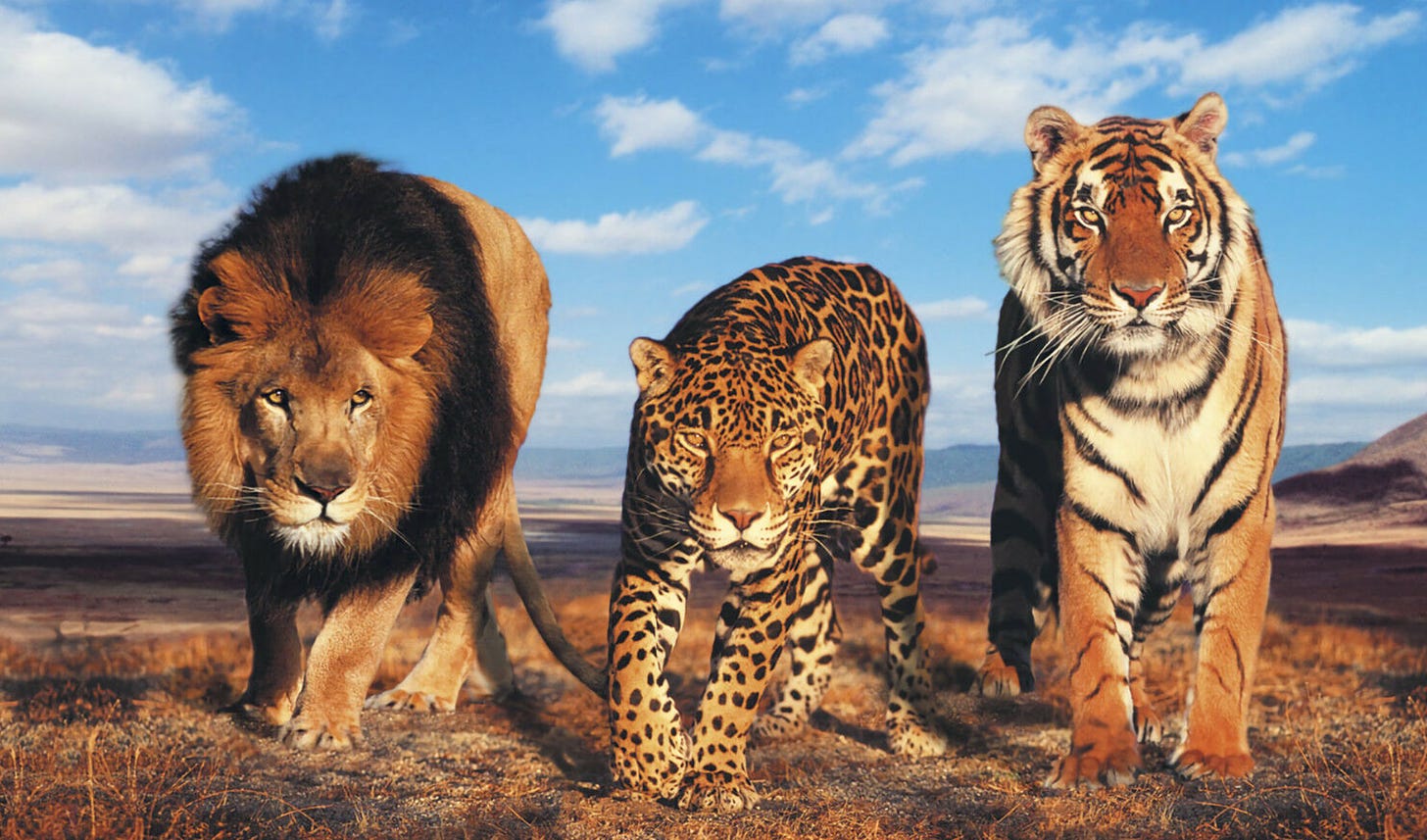Will Big Cats Survive Exposure to Free-Roaming Domestic Cats in the Sundarbans & Elsewhere?
By Jordan Schaul | National Geographic | October 2, 2013 (Updated)
As a wildlife conservationist, I empathize with those who advocate for a “no-kill” policy regarding the control of feral and stray cats populations. However, let me share ecological concerns from conservationists regarding free-roaming cats.
I just returned from South Asia where I was working on rescue projects aimed at helping Indian leopards, jungle cats, other wild felids, and other carnivore species, some of which are endemic to the region.
Specifically, the Indian subcontinent is home to the rare Bengal tiger subspecies, an iconic and revered wild cat subspecies. The Bengal tiger is considered Endangered, but not yet Critically Endangered like some other tiger subspecies, all of which are vanishing more or less from our planet.
And in the mangroves forests of Sundarbans, which covers a transboundary region of India and Bangladesh, there exists one of the most important nature reserves in the world for the Royal Bengal tiger. It is home to approximately 270 Bengal tigers as well as leopards and jungle cats.
There are some villages nearby where people similar to you and me choose to love and cherish domestic cats as either pets or agents of pest control.
Not far from the village and right near the protected mangrove forests there are established feral cat colonies, comprised of cats that most likely descended from cats kept by local villagers. The feral cats mind their own business and many people believe they deserve to be left alone, but some of them very likely carry feline immunodeficiency virus and feline leukemia.
These two diseases are considered by some established scientific and medical communities to be fairly common in feral cats and very difficult to treat.
What do we do to prevent the spread of these lethal viral diseases if they are a legitimate threat to not only other feral, and other free-roaming cats, and pets, but to the tigers and the other four species of big cats that live on the subcontinent (Asiatic lions, leopards, clouded leopards, and snow leopards)?
All of these pantherine cats are in jeopardy of vanishing in our lifetimes due to a number of other human-caused or anthropogenic threats. I haven’t even mentioned the several smaller wild cat species in India, which are susceptible to these viruses like fishing cats and jungle cats.
I don’t have the answer, and I don’t want to demonize feral cats more so than they have already been demonized. But I do know that although I am now much more a fan of domestic cats, I am and always have been a fan of wild cats. I don’t want to see anyone kill feral cats nor do I want to see tigers and Asiatic lions of which there are only a few hundred left in India, succumb to disease and possibly extinction.
For more information on big cats and National Geographic’s Big Cat Initiative, visit this link.
ABOUT NATIONAL GEOGRAPHIC SOCIETY
The National Geographic Society is a global nonprofit organization that uses the power of science, exploration, education and storytelling to illuminate and protect the wonder of our world. Since 1888, National Geographic has pushed the boundaries of exploration, investing in bold people and transformative ideas, providing more than 14,000 grants for work across all seven continents, reaching 3 million students each year through education offerings, and engaging audiences around the globe through signature experiences, stories and content. To learn more, visit www.nationalgeographic.org or follow us on Instagram, Twitter and Facebook.
MEET THE AUTHOR
Jordan Carlton SchaulWith training in wildlife ecology, conservation medicine, and comparative psychology, Dr. Schaul's contributions to Nat Geo Voices have covered a range of environmental and social topics. He draws particular attention to the plight of imperiled species highlighting issues at the juncture or nexus of sorta situ wildlife conservation and applied animal welfare. Sorta situ conservation practices are comprised of scientific management and stewardship of animal populations ex situ (in captivity / 'in human care') and in situ (free-ranging / 'in nature'). He also has a background in behavior management and training of companion animals and captive wildlife, as well as conservation marketing and digital publicity. Jordan has shared interviews with colleagues and public figures, as well as editorial news content. In addition, he has posted narratives describing his own work, which include the following examples: • Restoration of wood bison to the Interior of Alaska (As Animal Curator at Alaska Wildlife Conservation Center and courtesy professor at the University of Alaska) • Rehabilitation of orphaned sloth bears exploited for tourists in South Asia (As executive consultant 'in-residence' at the Agra Bear Rescue Center managed by Wildlife SOS) • Censusing small wild cat (e.g. ocelot and margay) populations in the montane cloud forests of Costa Rica for popular publications with 'The Cat Whisperer' Mieshelle Nagelschneider • Evaluating the impact of ecotourism on marine mammal population stability and welfare off the coast of Mexico's Sea of Cortez (With Boston University's marine science program) Jordan was a director on boards of non-profit wildlife conservation organizations serving nations in Africa, North and South America and Southeast Asia. He is also a consultant to a human-wildlife conflict mitigation organization in the Pacific Northwest. Following animal curatorships in Alaska and California, he served as a charter board member of a zoo advocacy and outreach organization and later as its executive director. Jordan was a member of the Communication and Education Commission of the International Union for the Conservation of Nature (CEC-IUCN) and the Bear Specialist Group of the IUCN Species Survival Commission (BSG-SSC-IUCN). He has served on the advisory council of the National Wildlife Humane Society and in service to the Bear Taxon Advisory Group of the Association of Zoos and Aquariums (AZA Bear TAG). In addition, he was an ex officio member of the council of the International Association for Bear Research and Management.




